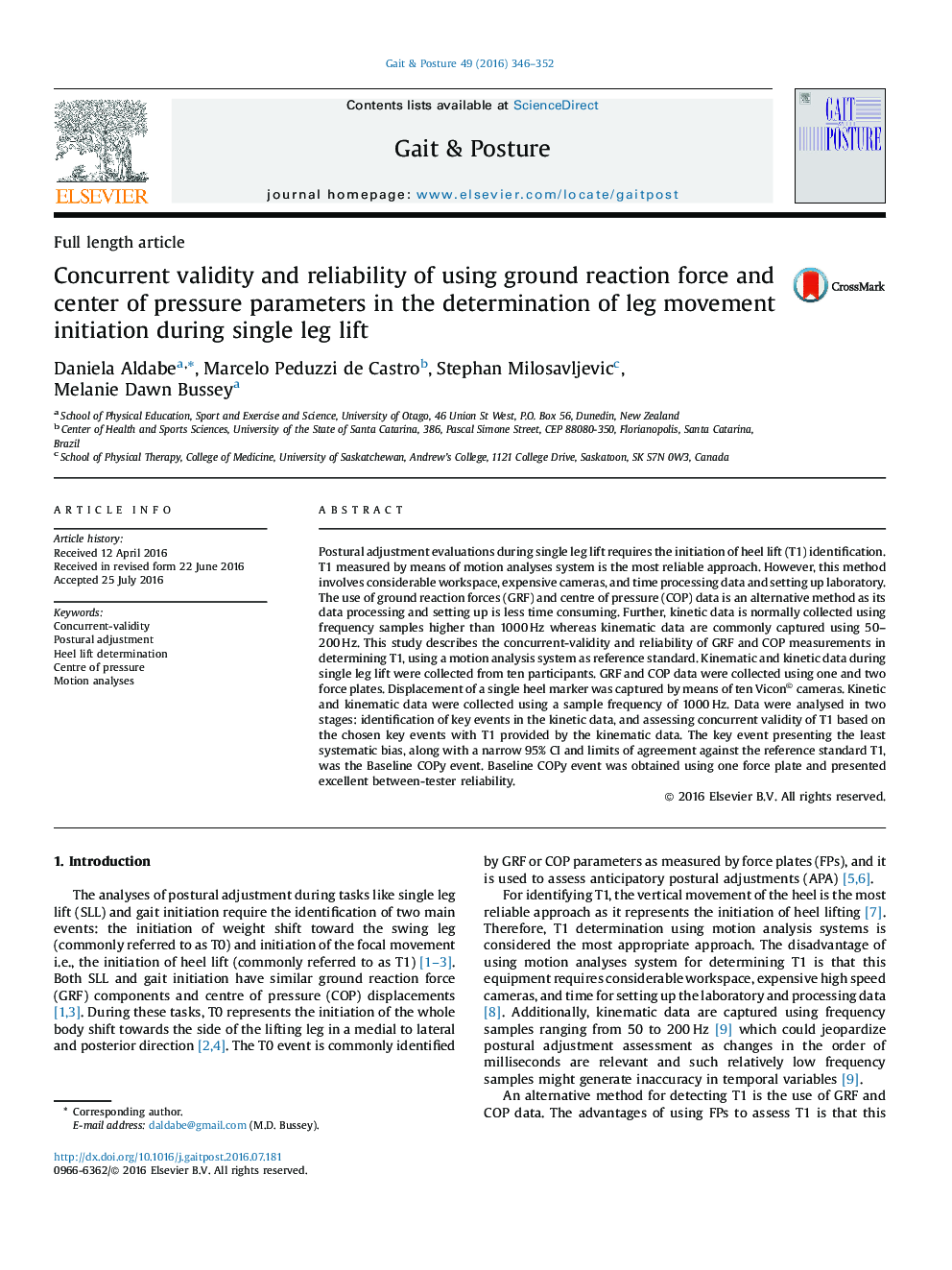| کد مقاله | کد نشریه | سال انتشار | مقاله انگلیسی | نسخه تمام متن |
|---|---|---|---|---|
| 6205495 | 1603846 | 2016 | 7 صفحه PDF | دانلود رایگان |
- Concurrent-validity and reliability of GRF and COP measurements in determining heel lift.
- Motion analyses system was used as the reference standard.
- GRF were measured using one and two force plates.
- Hell lift was performed with eys open and closed and in fast and self-selected speed.
- Baseline medio-lateral COP presented the reliable valid method to assess hell lift.
Postural adjustment evaluations during single leg lift requires the initiation of heel lift (T1) identification. T1 measured by means of motion analyses system is the most reliable approach. However, this method involves considerable workspace, expensive cameras, and time processing data and setting up laboratory. The use of ground reaction forces (GRF) and centre of pressure (COP) data is an alternative method as its data processing and setting up is less time consuming. Further, kinetic data is normally collected using frequency samples higher than 1000Â Hz whereas kinematic data are commonly captured using 50-200Â Hz. This study describes the concurrent-validity and reliability of GRF and COP measurements in determining T1, using a motion analysis system as reference standard. Kinematic and kinetic data during single leg lift were collected from ten participants. GRF and COP data were collected using one and two force plates. Displacement of a single heel marker was captured by means of ten Vicon© cameras. Kinetic and kinematic data were collected using a sample frequency of 1000Â Hz. Data were analysed in two stages: identification of key events in the kinetic data, and assessing concurrent validity of T1 based on the chosen key events with T1 provided by the kinematic data. The key event presenting the least systematic bias, along with a narrow 95% CI and limits of agreement against the reference standard T1, was the Baseline COPy event. Baseline COPy event was obtained using one force plate and presented excellent between-tester reliability.
Journal: Gait & Posture - Volume 49, September 2016, Pages 346-352
